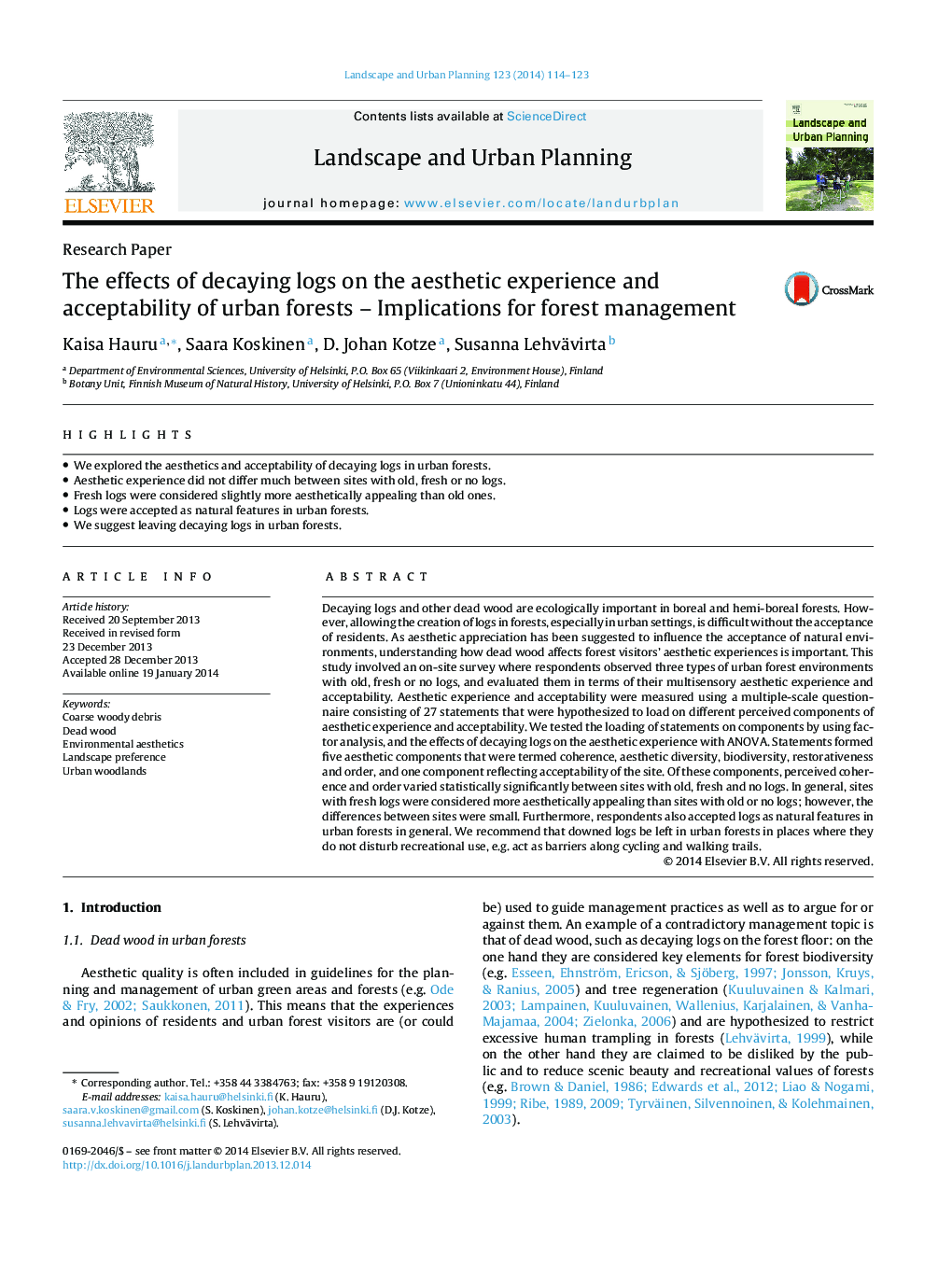| Article ID | Journal | Published Year | Pages | File Type |
|---|---|---|---|---|
| 7461709 | Landscape and Urban Planning | 2014 | 10 Pages |
Abstract
Decaying logs and other dead wood are ecologically important in boreal and hemi-boreal forests. However, allowing the creation of logs in forests, especially in urban settings, is difficult without the acceptance of residents. As aesthetic appreciation has been suggested to influence the acceptance of natural environments, understanding how dead wood affects forest visitors' aesthetic experiences is important. This study involved an on-site survey where respondents observed three types of urban forest environments with old, fresh or no logs, and evaluated them in terms of their multisensory aesthetic experience and acceptability. Aesthetic experience and acceptability were measured using a multiple-scale questionnaire consisting of 27 statements that were hypothesized to load on different perceived components of aesthetic experience and acceptability. We tested the loading of statements on components by using factor analysis, and the effects of decaying logs on the aesthetic experience with ANOVA. Statements formed five aesthetic components that were termed coherence, aesthetic diversity, biodiversity, restorativeness and order, and one component reflecting acceptability of the site. Of these components, perceived coherence and order varied statistically significantly between sites with old, fresh and no logs. In general, sites with fresh logs were considered more aesthetically appealing than sites with old or no logs; however, the differences between sites were small. Furthermore, respondents also accepted logs as natural features in urban forests in general. We recommend that downed logs be left in urban forests in places where they do not disturb recreational use, e.g. act as barriers along cycling and walking trails.
Related Topics
Life Sciences
Agricultural and Biological Sciences
Ecology, Evolution, Behavior and Systematics
Authors
Kaisa Hauru, Saara Koskinen, D. Johan Kotze, Susanna Lehvävirta,
